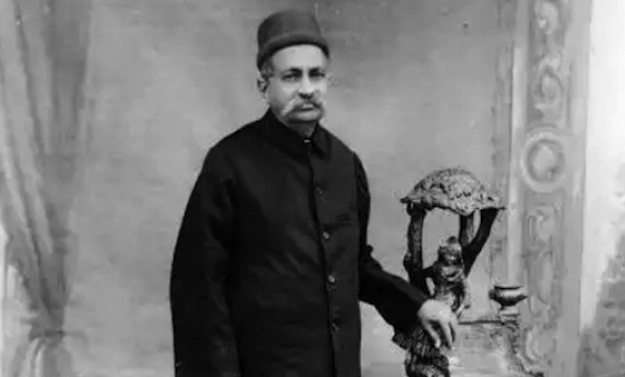Jamshedji Framji Madan was one of the earliest pioneers of cinema in the Indian sub-continent. From exhibiting films in a bioscope tent to building the first permanent cinema theatre in India, from owning a chain of theaters to exhibition of foreign films, from producing films locally to creating the first Indian film star, Patience Cooper, Madan was an entrepreneur in the truest sense of the word.
Born in 1856 in a Parsi family in Bombay, Madan’s father worked for the Bombay Reclamation Bank. When the bank failed, Madan was forced to leave school. He then joined the amateur drama club, Elphinstone Natak Mandali, as a prop boy and actor in 1868. Thereafter, he became a famous actor for the mandali and traveled the length and breadth of India as they staged plays all over the country. While in Calcutta, he bought the drama club off from its owner Cooverji Nazir and decided to settle down in Calcutta as well. Here, he constructed two theaters to stage his plays, the Corinthean and Alfred. He also decided to diversify his operations like a true businessman by dabbling in importing liquor, foods and pharmaceutical products, besides dealing in insurance and real estate as well.
Madan saw the future for moving image pictures, which was then in its infancy following the first ever screenings of the Lumiere program in India in 1896. As early as 1902, he bought cinema equipment from an agent of the Pathe company and began organizing ‘bioscope’ showings in tents pitched at various key locations in Calcutta. As his business began to prosper, Madan realized the need to have permanent locations so that he could expand and consolidate his business for exhibition of films. in 1907, he built the first permanent theater in India, the Elphinstone Picture Palace, for exhibition of the films he acquired. He then expanded by building a chain of such picture halls and within a short period, Madan’s empire extended across India, Burma and Ceylon.
Needing content for his picture halls, initially Madan exhibited foreign films but gradually began to include films made by Phalke as well into his program. As the demand for motion pictures began growing dramatically, Madan first launched the Elphinstone Bioscope Company to produce his own content (Prahlad Charitra (1915)), before turning it into Madan Theatres Ltd in 1918, one of the earliest full fledged film companies in India. Madan Theatres Ltd began it’s filmmaking journey with Bilwamangal (1919). The film was directed by Rustomji Dotiwala and starred Dorabji Mewawala in the title role alongside a popular stage actress, Miss Gohur, playing the temptress, Chintamani. Thought to be lost forever as Madan lost almost all of their films in a major fire, about 20 odd minutes of the film have been miraculously traced out and given to the National Film Archive of India (NFAI) from the Cinematheque Francaise in Paris. The footage shows that Bilwamangal had rather sophisticated art direction for the time and includes among other scenes, Bilwamangal arguing with his father and a dance by Chintamani.
Going by popular trends, most of the Madan films were mythologicals but they did explore the odd fantasy or social subject as well. Initially, their artists came from the stage, the lead actresses usually Anglo-Indian girls who took Indian pseudonyms. One such actress who became Indian cinema’s first film star was Patience Cooper, who, going against the prevalent fashion, retained her original name. Cooper became a star thanks to two mega Madan productions, Nala Damayanti (1921) and Dhruva Charitra (1921), both directed by Italian, Eugenio De Liguoro. De Liguoro was known in Italy for his Orientalist spectacles like Fascino d’Oro (1919). Nala Damayanti, in particular, was famous for its special effects at the time – Narada’s ascent of Mount Meru to heaven, the transformations of four gods into impersonations of Nala, the transformation of Kali into a serpant among others. Madan also made an early social with Cooper, Pati Bhakti (1922), advocating a wife’s total devotion to her husband and gave her one of the earliest double roles in indian cinema in Patni Pratap (1923).
Even as Madan Theatres settled into a regular outflow of films, JF Madan passed away in 1923. After his death, his son, JJ Madan, took over the reigns of Madan Theatre Ltd. The company scaled glorious heights, reaching its peak by the end of the 1920s and in spite of making a successful transition into the talkies, it could not sustain thereafter, ending its streamline production of films in 1937.


